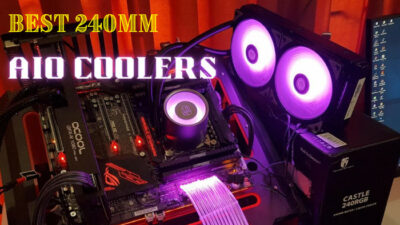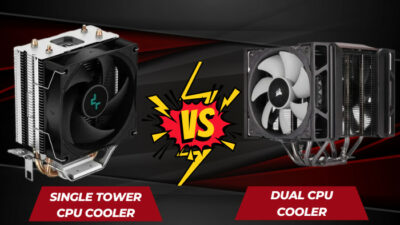Computer fans are essential enough to consider. Since heat is the enemy of electronics, most of those come with fans built in. Computer Fans are more fundamental than other components as it holds CPU, GPU, and other heat-producing components.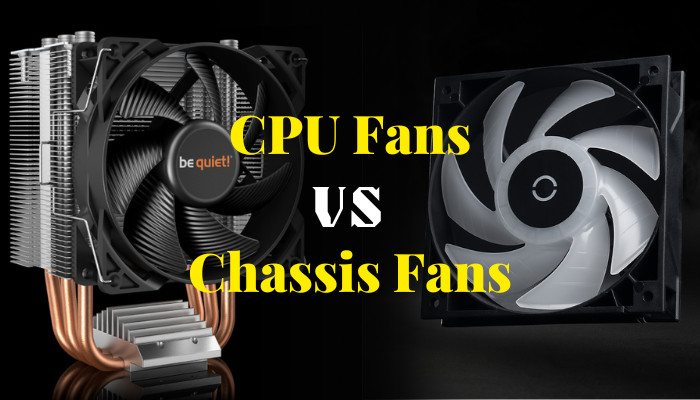
Modern Computer-Cases and Fans are extremely pushing the limits of heat alleviating for power users like us. Although fans have common intent — cooling, CPU and Chassis Fans are distinct somehow.
The potent dissimilarities between CPU fans and Chassis Fans are briefly interpreted in this article to enlighten your enthusiasm.
What is a CPU Fan?
In short, a CPU fan is installed on top of the Processor with a heatsink to cool down the CPU temperature. The heat produced by the processor is scattered over the heatsink, and the CPU fan eradicates heat by drifting air across it with the CPU fan’s help.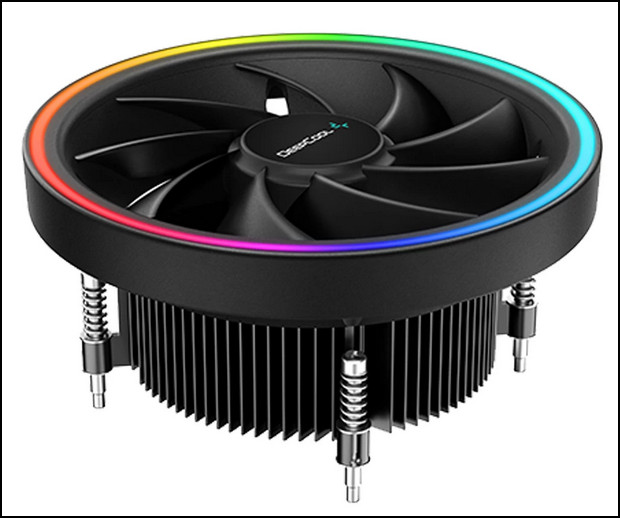
CPU fans are applied explicitly on top of the processor only to eliminate CPU heat. The PWM type fans are mainly used for CPU fans, which are controllable as per need.
CPU coolers have numerous types, like the usual On-top-CPU, Tower heatsink, AIO, etc.
These are important as you cannot start a PC without a CPU cooler.
What is a Chassis Fan?
Chassis fans are often installed in the front and back of the chassis to inhale cool air into the cabinet and draw the heat away, which is produced by components like CPUs & GPUs.
The case fans are crucial to optimize the airflow through all the computer components. It’s pretty important to swallow positive air into the interior using the front-facing fans, and exhaust total gulped air as negative air to maintain the balance.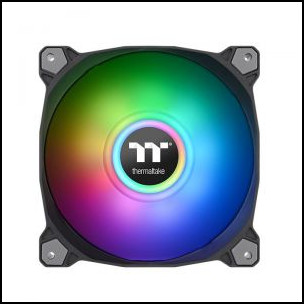 The chassis fan is not responsible for cooling down any particular component. The job is to keep the air flowing through all over internal components and also eject the heat continuously generated by the Processor and graphics unit to keep the whole PC’s temperature down.
The chassis fan is not responsible for cooling down any particular component. The job is to keep the air flowing through all over internal components and also eject the heat continuously generated by the Processor and graphics unit to keep the whole PC’s temperature down.
Also, check out the list of the top 9 best-selling air coolers.
What Are The Key Differences Between CPU & Chassis Fans?
The differences are quite subtle between CPU fans and Chassis fans. The user can’t even distinguish between fans by looking at them. Moreover, Modern fans are built as a hybrid to serve both use cases.
Some detailed attributes make those different, like PWM compatibility, Fan design, diameter, and so on.
Here are the particularities that make CPU & Chassis Fans unalike:
Pin Header Compatibility
Most chassis fans come with a 3-pin header, whereas CPU Fans are required to have a 4-pin header. The extra pin on the CPU fan is used to control the Fan speed.
Here is a connector pinout table to indicate which pin does what:
| Pin Serial | Wire Color | Description |
|---|---|---|
| 1 | Black | GND (ground) |
| 2 | Yellow | 12v Power |
| 3 | Green | Tachometric Signal (speed sensor) |
| 4 | Blue | (PWM) Pulse Width Modulation |
Fans with a 3-pin header have the first three wires to operate which are not controllable. And Fans with a 4-pin header have all those four wires with the PWM feature, which can control fan speed.
Although Chassis fans & CPU fans both come with a 4-pin header nowadays, the CPU fan’s 4-pin header is obligatory.
Note: You can use a 3-pin header on a 4-pin socket on the motherboard and vice-versa. Although you can use a 4-pin fan header into a 3-pin header socket, you won’t be able to use the PWM feature to control your fan.
There is also confusion relying on Fan Header Name. The indicated signs like CPU_FAN, CPU_OPT, SYS_FAN, and CHA_FAN work more or less differently.
Here is a list that can help you to differentiate between labels and use them properly:
| Header Name | Work Description |
|---|---|
| CPU_FAN | Only for CPU Fans |
| CPU_OPT | Can be used if you have an extra CPU Fan or AIO |
| SYS_FAN / CHA_FAN | Chassis fans & Radiator Fans are applicable on these headers. |
Fan Diameter
Several fan diameters are prevalent in the mainstream market, which are 80mm, 92mm, 120mm, 140mm, 200mm, and 220mm. Among all those types, 120mm is the most used diameter across the world.
Relatively smaller-sized fans like 92mm & 120mm fans are suitable for CPU Fans, and larger size fans with 120mm plus 140mm up to 220mm fans are used as Chassis Fans.
CPU fans are kept small because CPU fans’ airflow needs to be faster than chassis fans. A bigger fan comes with a slower RPM, which isn’t ideal for CPU cooling. However larger the fan diameter is, the quieter those are.
It’s a fact that bigger diameter fans, like 200 & 220mm fans, die faster than smaller fans.
CFM & RPM
The capability and quality of a fan are measured by the CFM and RPM. These two attributes are correlated and vary over build quality and manufacture.
CFM refers to Cubic Feet Per Minute, showing how much air a fan can inhale or exhaust in a minute. An average chassis fan has 70 CFM, and a CPU fan is better than 90-100 CFM.
RPM means Rotations Per Minute, indicating how many times a Fan completes one cycle. The RPM of a fan should be 600 RPM to 3000 RPM.
Chassis fans may have lower RPM, but CPU fans should be faster than 1000 RPM.
Fan Type & Fin Design
Fin Design and air intake behavior are the main factors that make a CPU fan different from a Chassis Fan. There are two types of fans in the market, SP Fans & AF Fans.
SP Fan means Static Pressure Fans which can respire air through resistance like Radiator, Mesh, Glass front panel, and dust filters. The design of fins are solely optimized to inhale or exhaust air from places with resistivity, which are suitable as CPU FANS. This fan adopts a flat fan blade design, which has little gaps between fins.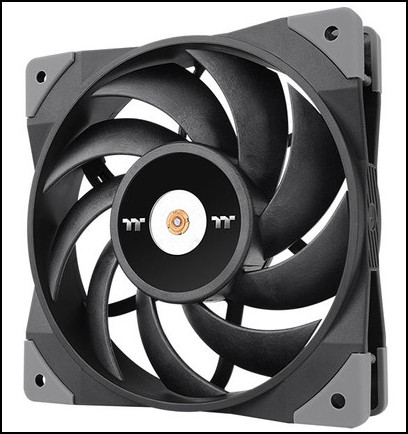
AF Fan advertises to Airflow Fans that is good for resistance fee circumstances. It’s also a bit cheaper and suitable to use as Chassis FANS rather than CPU Fans. Gaps between fan blades are bigger than SP fans on Airflow-type fans.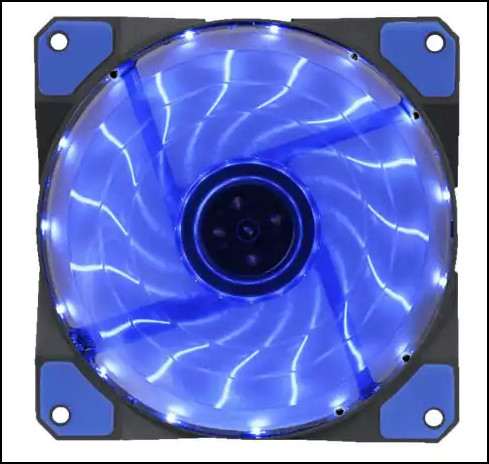
Recently, most manufacturers developed a hybrid fan design that can be used as a CPU fan and Chassis Fan either.
However, Fans should be selected according to your Chassis design.If you are using an AF type Chassis fan, certain resistance can diminish the airflow. Therefore, you would need SP-type Fans in this situation.
Bearing Type
The matter of longevity and neatness concerns bearing types of Fans. There are several types of fans: Fluid Bearing, Ball Bearing, Sleeve Bearing, Rifle Bearing, and the ultimate one- Maglev Bearing.
Fluid Bearings are the cheapest ones with smaller longevity, which is suitable for horizontal mounting positions. If your computer doesn’t have dust filters and you don’t clean your PC interior often, the dust will damage the Motor Hub liquid soon.
Ball bearing Fans are necessarily expensive with good longevity, which has no issue with the mounting position. But excessive dust can damage bearings by jamming them.
Sleeve Bearing is more costly than bearing motor-based fans but offers great longevity with ball & liquid technology. Despite the fact, dust can damage the motors.
Rifle Bearing overcomes the drawbacks of sleeve bearings as it’s the same technology with a sealed motor immune to dust.
MagLev Bearing is the most expensive motor used in fans which is resistant to dust & shock and also lasts longer than most other fans.
Also, check out the key differences between CPU fans and OPT fans.
How to Optimize Fan Directions?
Just buying powerful and particular fans won’t give you desired performance if you can’t install those optimally. You have to understand the airflow mechanism to make the most out of your rig.
Chassis design and ambiance play an important role while installing and optimizing the proper airflow in PC chassis. Suppose your chassis has enough holes & empty spaces for air drifting; use AF fans equally for intake and exhaust. If you use three fans to inhale air, you must use the same amount of fans to eject the air absorbed.
The next thing to notice is that you have installed fans in the right direction. Find the concave side of the fan, which is the exhaust side, and use it accordingly. Some fans have an arrow detected to ease such confusion.
If you fail to install fans in the right direction, your system will run slow and unstable.
That’s why check out our complete guide on proper CPU cooler fan direction.
FAQs
Can I use my CPU fan as a Chassis fan?
If both sizes are identical, you can install them and vice-versa, but it won’t give you a satisfactory result.
Should case fans be faster than CPU fans?
Yes, you need a fast enough fan with at least 1000 RPM of 120mm diameter. In contrast, the Chassis fan can be 600 RPM.
Is it OK to run a CPU fan at full speed?
High RPM or airflow won’t do any harm to your CPU despite bothering you with the noise that it produces.
Does the CPU fan increase FPS?
As performance is correlated to CPU cooling, an aftermarket cooler with high RPM and CFM will boost your gaming FPS.
What is a good DB for case fans?
This is a matter of experience that differs across users, whether a user can tolerate noise retaining the performance. But 19dBA to 25dBA is a safe choice.
Final Verdict
Not long ago, people were not bothered about a cooling system that much until they were actual professional users. Processor cooling requirement has increased over time with the boost of CPU performance.
The need for specific fan types also became a limelight issue for such reasons; that’s why you may seek different fans like CPU & chassis fans as per need.
If there is anything more you’d like to know about, try the comment section below.


